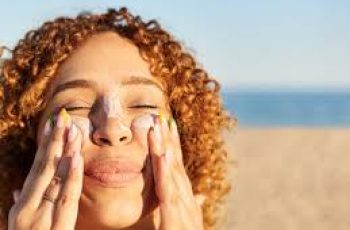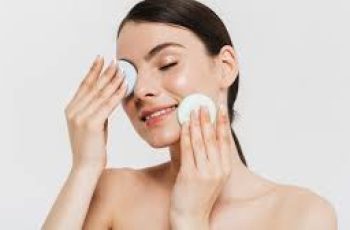
Astringents in Skin Care: What They Are, How They Work, and How to Use Them Safely
If you’ve ever used a toner that made your skin feel tighter and refreshed, chances are it contained an astringent. Astringents are powerful skincare ingredients with many uses. But they’re not for everyone.
Understanding how astringents work—and when to use them—can help you make smarter skincare decisions.
This article covers what astringents are, how they work, the types available, and how to choose the right one for your skin.
What Is an Astringent?
In skincare, an astringent is a substance that causes the skin to contract or tighten. This happens by interacting with skin proteins and reducing oil and water on the skin’s surface.
The result is temporarily tighter skin, reduced oiliness, and smaller-looking pores. Some astringents also offer antibacterial or soothing effects, depending on their ingredients.
The FDA defines astringents as products that cause a local, limited protein coagulant effect on the skin or mucous membranes. This basically means they cause proteins to clump and tighten the tissue.
How Do Astringents Work?
Astringents work by precipitating proteins in the outermost layers of the skin. When these proteins clump together, they create a tightening effect. This reaction also absorbs water from the skin.
Here are the key ways astringents work:
Protein Denaturation: Astringents cause proteins, like keratin, to denature or coagulate, tightening the tissue and firming the skin.
Surface Oil Removal: Astringents strip away excess sebum and oil, which helps reduce shine and clears pores.
Dehydration of Skin: They can pull water from the skin’s surface, increasing the sensation of tightness.
Tissue Constriction: Some ingredients cause mild swelling of cells to go down, further tightening the skin.
pH Adjustment: Some astringents help rebalance skin’s pH after cleansing, supporting a healthier skin barrier.
While the skin-tightening effect can be refreshing, overuse may lead to dryness or irritation—especially for those with sensitive or dry skin types.
Types of Astringent Ingredients
Astringents can be natural, plant-based, or synthetic. Some offer additional benefits like soothing irritation, calming inflammation, or preventing breakouts.
Natural Astringents
Witch Hazel: Extracted from the bark and leaves of the witch hazel shrub. A classic, alcohol-free astringent.
Sage: Has antioxidant and anti-inflammatory effects alongside its astringent properties.
Black Tea: Contains tannins that tone and tighten the skin naturally.
White Oak Bark: Rich in tannins and has antibacterial properties.
Ginkgo Biloba: A plant with antioxidant and astringent qualities.
Sandalwood Oil: Known for its calming, antiseptic, and astringent benefits.
Comfrey: A healing herb that also mildly tightens the skin.
Manjishtha: Used in Ayurvedic skincare for treating acne and inflammation.
Synthetic Astringents
Alcohol (Ethanol): Strong and fast-acting, but often too drying for sensitive or dry skin.
Aluminum Acetate: Often found in aftershaves and antiperspirants for tightening pores.
Alum: A mineral salt used to tighten pores and calm post-shave skin.
Calamine: A blend of zinc and iron oxides with both soothing and astringent effects.
What Skin Types Should Use Astringents?
Astringents work best for those with oily or acne-prone skin. They help reduce sebum, clean clogged pores, and give the skin a matte, refined look.
However, not everyone benefits from astringents. People with dry, sensitive, or combination skin should use caution. Harsh or alcohol-heavy formulas may increase irritation or worsen dryness.
It’s a good idea to learn your Baumann Skin Type or consult a skincare specialist before choosing an astringent product. This ensures you’re using the right product for your specific needs.
Astringents vs. Toners: What’s the Difference?
Astringents and toners are often confused because they serve similar purposes. But there are some key differences:
Astringents usually contain stronger ingredients like alcohol or acids. They’re more aggressive and are typically used to remove oil and tighten pores.
Toners are generally milder and hydrating. Many modern toners contain plant extracts, antioxidants, and soothing agents.
That said, the two terms are often used interchangeably today. Many products marketed as toners actually contain astringent ingredients—especially for oily or acne-prone skin types.
How Astringents Help Unclog Pores
Astringents play a major role in helping keep pores clear and clean. Here’s how they do it:
Removing Surface Oil and Debris: Astringents strip away excess sebum and dirt that can clog pores.
Supporting Exfoliation: Some astringents contain exfoliants like salicylic acid, which removes dead skin cells.
Antiseptic Benefits: Many astringents, like witch hazel or alcohol, kill acne-causing bacteria on the skin’s surface.
Minimizing Pores Temporarily: By tightening the skin, astringents reduce the size of pore openings, making it harder for debris to accumulate.
Balancing Skin’s pH: Astringents restore the skin’s acidic pH, creating an environment less hospitable to bacteria.
Supporting Hydration (with care): Some formulas contain calming or hydrating ingredients to prevent irritation.
Together, these actions reduce the likelihood of blackheads, whiteheads, and acne breakouts.
When Should You Use an Astringent?
Use an astringent after cleansing your face and before applying serum or moisturizer. This helps clear any leftover residue, refine pores, and prepare skin for further treatment.
Here are general usage tips:
Frequency: 1–2 times per day for oily or acne-prone skin. Once daily or every other day for combination skin. Avoid daily use if you have sensitive or dry skin.
Time of Day: Morning use helps control oil during the day. Night use can clear leftover dirt and oils from the day.
Follow Up With Moisturizer: Always apply a good moisturizer to replenish hydration and maintain your skin barrier.
Avoid using multiple astringent products at once or combining them with strong exfoliants unless advised by a dermatologist.
Astringents in Popular Skin Care Products
Astringents can be found in various types of skincare products. Here are some common examples:
Toners: Often used after cleansing, many toners contain witch hazel, tea tree oil, or alcohol to refine pores and reduce shine.
Essences: Lightweight liquids applied before serums that often contain mild astringents like plant extracts.
Aftershaves: These usually contain alcohol or alum to soothe and disinfect freshly shaved skin.
Spot Treatments: Acne spot treatments sometimes use salicylic acid or alcohol to dry out blemishes quickly.
Face Mists: Some facial sprays contain witch hazel or tea tree oil for a refreshing and toning effect.
Are Alcohol-Free Astringents Better?
Many modern skincare brands now offer alcohol-free astringents that are gentler and more skin-friendly. These products often use:
Witch hazel distillate (without alcohol)
Rose water, Aloe vera, Green tea, Cucumber extract
These ingredients provide a mild toning effect without stripping the skin’s natural moisture. They’re ideal for sensitive skin or people who want the benefits of astringents without harshness.
Benefits of Astringents in Skin Care
Let’s recap the core benefits of astringents:
Tighten pores and smooth skin texture
Reduce surface oil and shine
Minimize the appearance of large pores
Sooth minor puffiness and irritation
Support acne treatment by cleaning pores
Balance pH and refresh skin post-cleansing
Improve the overall look and feel of skin
When used as part of a balanced routine, astringents can significantly improve the appearance of oily or acne-prone skin.
Precautions and Final Thoughts
While astringents can offer excellent results, overuse or choosing the wrong product can damage your skin barrier.
Keep these safety tips in mind:
Avoid high-alcohol formulas if you have dry or sensitive skin.
Don’t overuse—tightness isn’t always a sign of health.
Follow with hydration to maintain moisture balance.
Patch test new products before applying them to your full face.
Used thoughtfully, astringents can be a powerful tool in your skincare routine. But as with any product, knowing your skin type and concerns is key.


